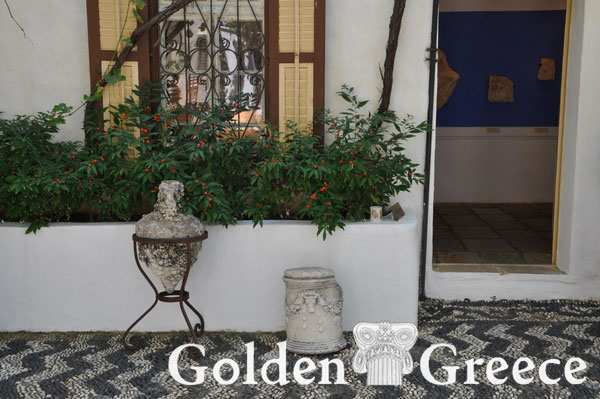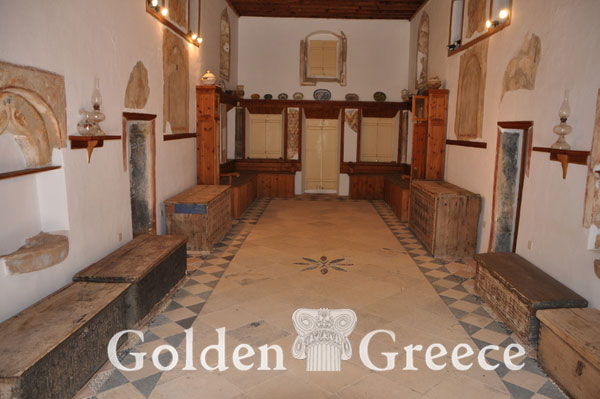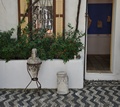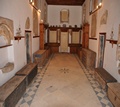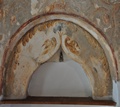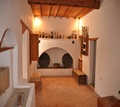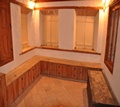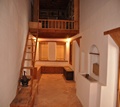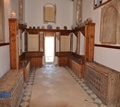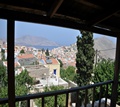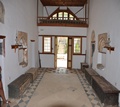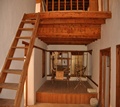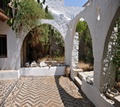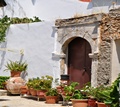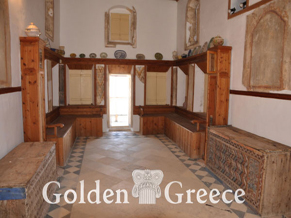
In Chora tis Symi, the capital of the island, it is a pleasant experience to visit the Hatziagapitou Hall located next to the Archaeological and Folklore Museum of Symi.
In the museum housed in the mansion of Hatziagapitos and more specifically in the "Hall of Hatziagapitos" (18th century), which communicates with the Archaeological and Folklore Museum of Symi through courtyards, gardens and an "arch" (passage), there is a representation of a Symian home with furniture, crockery, paintings as well as photographs from earlier times.
Both the Farmakidis Mansion, which houses the Archaeological and Folklore Museum of Symi and were donated by their heirs to the Greek state, as well as the collections they house, which were built on the island according to Western European standards during the 19th and 20th centuries when the Symi and the entire Dodecanese was under Turkish and later Italian occupation.
The mansion of Hatziaagapitos is an imposing castle-like three-story mansion on one side, while on the other it appears to be a single-story building, built with gray stone, surrounded by a high stone wall and with its courtyard paved with well-crafted pebbles.
The main building has a portico or propylon on the NE side, from where the visitor enters directly into the reception hall, the "Sala", the good onda (or noda as the locals say). The Hall has dimensions of 12X14 m., and the mansion got its name from it. This long, narrow hall is designed with many windows and skylights, has a wooden ceiling and a floor laid with slabs and interspersed pebbles that create geometric and floral ornaments. In front of the entrance in a separate frame are written the initials of the owner ΑΑΑ (Μιαγαπιτου). On the side walls there is a tap-washbasin with an arched, painted frame, for the cleanliness of the tenants or visitors. In the northern part there is a sitting room with wooden benches in a C shape (sofas) which is interrupted by the door that leads to the balcony with the wonderful view.
The side walls of the hall were covered with mural decoration, with representations of young couples in love and with the symbols of the four Evangelists. Today, some fragments of the painting are preserved. The other areas of the house include: the office, the dining room, the bedrooms, the old man's room, the hiding place, where they hid valuables, the kitchen with the fireplace and the loft, the maids' room, the guest room, the bathroom , the cellar and the laundry room. It is impressive that in a hiding place of the house, during the building restoration work, a valuable "treasure" of about fifty silver coins of the 19th century that were circulating in the markets of Europe was found.
According to the scholars, this house was built in the last twenty years of the 18th century by local craftsmen and having as a model an architectural design brought from Venice. However, it is worth the effort to visit the site of the Hatziagapitou Hall, which is unique for the island and represents a historical period and delimits a time period characterized by economic prosperity, flourishing and prosperity. This mansion was the residence of a rich Symian merchant, who was also the consul of Greece and Spain.
In the exhibits of the "Hall of Hatziagapitos", among others, you will see a representation of the interior of a traditional Symi house, as well as traditional local costumes of Symi.
Editor: Fotini Anastasopoulou







